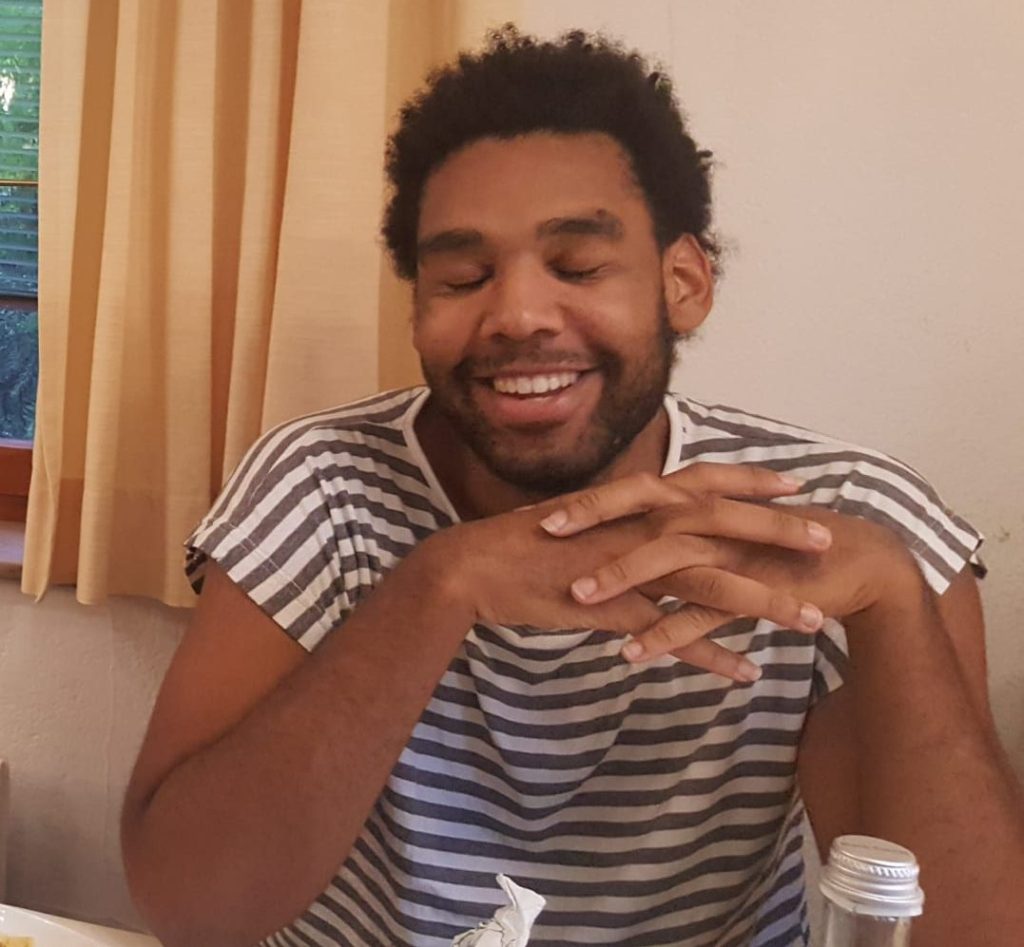Pädagogik (pedagogy) and Versuch (noun: attempt, try) are important and persistent aspects of Brecht’s thought. For example, in an essay written on the topic of ‘The Theatre of Tomorrow’ published in the spring of 1929, Brecht stated that “Only a new purpose can lead to a new art. This new purpose is called pedagogy.”[1] That Brecht would make such a remark in 1929, at the beginning of his Lehrstücke (Learning Pieces) phase is not surprising, given that the entire enterprise of the Lehrstücke was structured around the notion of theatre serving as a pedagogic apparatus (both in its production and its reception) for the working class, which could help foster a revolutionary class-consciousness in them. Between 1929 and 1932, the word ‘Pädagogik,’ its derivations, as well as other education jargon come up frequently in his theorizing on his Lehrstücke, for example in fragments such as “The Big and the Little Pedagogy” and “An Example of Pedagogics.” Indeed, in 1935, Brecht draws a direct line between his Lehrstücke and Epic Theatre in his essay, “Theatre for Pleasure or Theatre for Instruction” with pedagogy serving as the common thread. The main thesis of that essay is that a theatre for instruction is also a theatre for pleasure, because learning is pleasurable. Art, Brecht believed should be in the service of “pleasurable learning, militant and cheerful learning.”[2] This applies equally to its production as it does to its reception.
The word Versuch is similarly an important aspect of Brecht’s thinking about art. Brecht compiled and published many of his works in a numbered series, comprising dozens of issues simply titled Versuche. This word often has scientific connotations related to exploration, testing, and proving. That Brecht would use this terminology is indicative of an empirical and experimental attitude underlying his approach to artistic production. At the end of the day, he was result-orientated and always willing to try different things, be innovative, reinvent, and put what he came up with to the empirical test to discover what works and what doesn’t. What he produced artistically were attempts, tries which may or may not have the effect he desired. They were mouthfuls of pudding spooned up for the true empirical test, the tasting.
In the spirit of these two Brechtian concepts, E-CIBS invited our friend, the multitalented Mbayo Jonathan Götz Bona, an actor, director, singer, writer, translator, and slam poet from Tübingen, Germany to collaborate with us. Bona has been doing theater on an almost annual basis since sixth grade, working with English-speaking groups, such as the Provisional Players and the King’s Players, as well as German-speaking groups like Scenario and (K)ein Drama. Since 2017, he’s been writing and performing slam poetry regularly and in 2018, began acting in short films. In 2022, he celebrated his directing debut with his self-written play, An Early Summer Night at the Brechtbau Theater, in Tübingen housed in the University of Tübingen’s Brecht Building which was officially named so in 1998, after a student led campaign to honor Brecht on the 100th anniversary of this birth. Earlier this year, Bona celebrated his New York City theater debut portraying Banquo in Screwdriver Productions’ Macbeth at the Players Theater. In addition to all this creative output, he trained at the American Musical and Dramatic Academy (AMDA), In New York in their Conservatory Studio Acting program where he was a student of E-CIBS co-editor, Anthony Squiers. This is where the seeds of this collaboration began to germinate.
Bona
The idea behind the collaboration was to link the pedagogue with the artist and undergo a loose experiment in which a creative exercise with a pedagogic motive was developed and for that creative exercise to result in a creative output in line with Brecht’s notion of a Versuch. This had a twofold purpose. From the pedagogical perspective, the objective was to gain a preliminary understanding about the utility of such an exercise as a learning device. From the artistic perspective, it was to produce something that offered up a Versuch at a revolutionary aesthetic.
The learning device was rather simple in its construction and originated from a conversation between the pedagogue (Squiers) and the artist (Bona), on a frequent topic between the two, music. That conversation centered around the idea that the artist is roughly the same age as Brecht was around a century ago when he began thinking about, experimenting, and collaborating with musicians and composers to try to find an aesthetic that could service his social revolutionary aims. This led to the question being posed of “what would a socially revolutionary musical aesthetic sound like today in Germany?” With this question in front of them, the artist and pedagogue needed to decide on an artistic mode for the Versuch. A playlist was deemed the most appropriate mode for two reasons. First, the two had been exchanging playlists with each other for years as a way of expressing musical interests and exposing the other to new sounds. Because of this experience, they recognized that a playlist would allow for a broad exploration of the question at hand. Second, the pair were drawn to the idea of a playlist because playlists fall into the significant and ubiquitous pop culture phenomenon known as creative or participatory consumption, which is where the culture consumer is simultaneously a cultural producer.
With these basic parameters established, the artist set out to create a playlist that would capture a revolutionary musical aesthetic today while documenting his encounter with the exercise. Methodologically, the creative process began with the artist surveying his friends and associates, requesting recommendations for what they deemed “playlist-worthy.[3]” After demographic, linguistic, and thematic considerations were made to come up with appropriate songs for the playlist, the overall composition was arranged to account for things like dramatic structure, flow, emotionality, and overall audience experience.
The final playlist, which is embedded below, included a variety of genres with both German and English lyrics, particularly Punk, Hip-Hop, and Classic Rock. The artist cited things like anti-fascist sentiments and “bash[ing] oppressive systems” for his inclusion of the Punk songs, while Hip-Hop was chosen for its ability to highlight racial and economic injustice, often from a perspective of “hard-hitting personal truths,” and the Classic Rock selection was a salute to the social deviance, nonconformity, and rebelliousness the genre has historically represented. The variety of genres reflected the “wide arrays of [recommendations for] songs” he received which in turn highlights the fragmentation of audience experiences in a culture industry defined by consumer atomization.
While “not every song…has a larger political meaning,” “some [being] stories, some celebrations of a certain emotion,” the artist did identify some commonality throughout the different genres and songs. The overlap included, for example, “seeking…connection and solutions,” their ability to express, in a relatable way, social frustration which “bursts outward at least as much as…inward,” and that they had the potential to shape opinions, “sharpen…activism,” and remedy social “ills…endure[d].”
Although the artist noted that all the songs did not perfectly reflect his own views, they nevertheless worked toward socially emancipatory ends. Notably, the artist recognized not only the need for class-based emancipation but also identified the necessity of overcoming “racist, sexist, [and] ableist” systems of oppression—all of which is possible according to the artist because “creativity is a part of the leftist spirit.”
Overall, the exercise proved a useful pedagogical tool. Through it, the artist independently developed a functional and appropriate methodology to answer a salient aesthetic question, identified multiple, relevant social factors in coming up with an answer, and revealed the depth of thought needed of an artist for such a socially pertinent task.
As for the utility of the Versuch, that is not a question which can be answered in this article. It is a question which must be left to you, the audience to decide. If these aren’t the songs of social change, another playlist must be compiled or if the songs of progressive social change aren’t yet out there, different songs must be written, new attempts made, until the right ones are found.
[1] Brecht, Bertolt. Brecht on Theatre. Edited by Marc Silberman and Tom Kuhn, Translated by Steve Giles and Jack Davis, Third edition, Bloomsbury Methuen Drama, 2015, p. 49.
[2] Ibid., p. 114.
[3] Many, many thanks and much love go out to friends and their friends who helped compile this list: Melanie, Clara Scharl, Clara Dietze, Marv, Dorian and Shauna Vagner.








![In Full View: Antigone [Brecht] as a Site-Specific Performance — by Olga Levitan](https://e-cibs.org/wp-content/uploads/2025/09/audio-tour-yossi-zwecker.jpg?w=1024)
